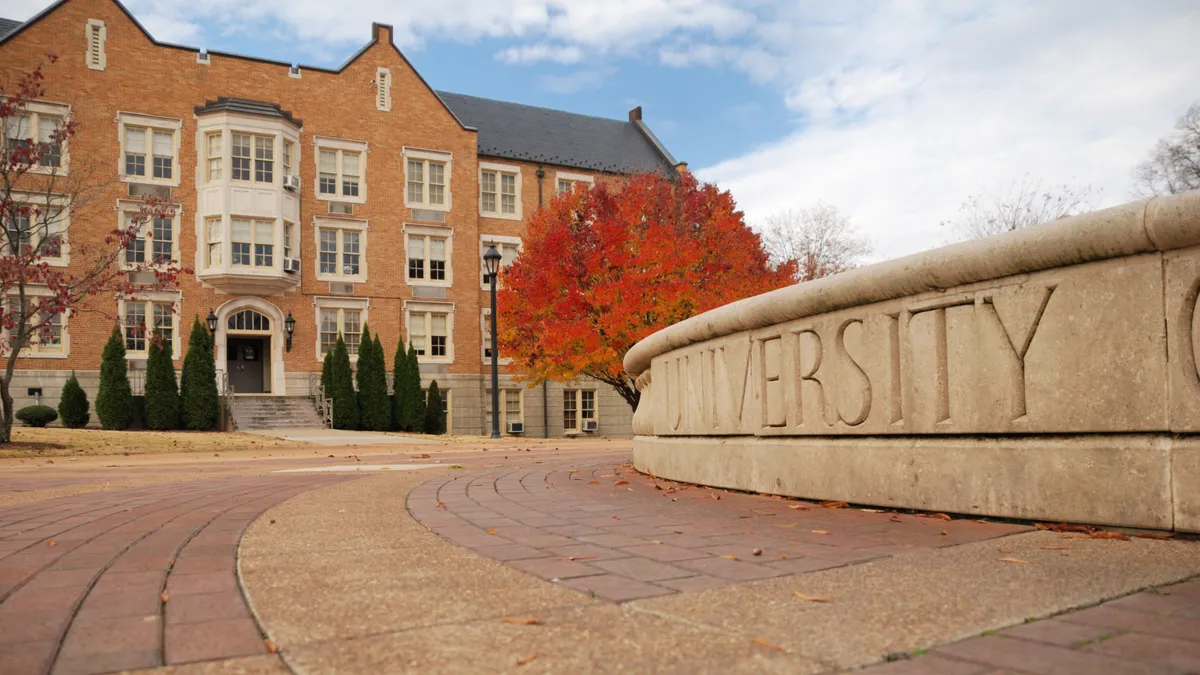Enrollment continues to fall in Pennsylvania’s network of state-owned universities, prompting doubts that the system's controversial merger of six institutions into two will actually remedy its entrenched financial problems.
The Pennsylvania State System of Higher Education’s enrollment slid by about 4.6%, from almost 88,700 students last year to about 84,600 in fall 2022, continuing a decade-plus decline.
The drop comes more than a year after the system voted to consolidate two sets of institutions: California, Clarion and Edinboro universities merged to create Pennsylvania Western University, and Bloomsburg, Lock Haven and Mansfield universities became Commonwealth University. The mergers became official in July of this year.
PASSHE Chancellor Daniel Greenstein has argued the two merged institutions will help attract a contingent of untapped students, including new adult learners. He earlier this year set an enrollment target of adding 18,000 students by an unspecified date.
But that goal seems increasingly out of reach.
The most pronounced enrollment drop this fall occurred at one of the two new consolidated institutions, Pennsylvania Western University, or PennWest. It experienced a nearly 12% student decline, in comparison to the three universities that were merged to form it.
PASSHE officials did not present the enrollment figures as a sign of doom and gloom. They instead focused on a rise in first-year student enrollment systemwide, which jumped by 7%.
The system enrolled 15,649 first-year students in fall 2022 versus 14,631 the previous year. Its first-year enrollment in fall 2020 was 16,180 students.
System spokesperson Cody Jones said in an email that a “multitude of factors go into any enrollment level, whether that be rising or falling.” Pennsylvania faces population declines and reduced number of high school graduates, he said.
“But if you look at the data, this is the first year in a decade when we have seen an overall increase in first-time freshmen,” Jones said. “So the curve is bending, and we are optimistic about our future.”
The system’s faculty union and higher education experts remain skeptical.
“The elephant in the room is that the campuses are hemorrhaging students,” said Andrew Koricich, a higher education professor at Appalachian State University who has studied the system extensively.
A grim picture
PASSHE suffers from trends troubling public higher ed at large: historically feeble state investment, a shrinking pool of high school graduates and a saturated college marketplace.
Combined, these factors have spelled trouble for the system, which has seen about a 25% drop in students over the last decade.
The coronavirus pandemic also compounded the system’s troubles, and it continues to batter the sector as a whole. National undergraduate student enrollment dropped almost 5% from spring 2021 to spring 2022, according to a May report from the National Student Clearinghouse Research Center.
The enrollment data PASSHE provided has holes, which concerned Koricich. He noted the system didn’t report certain detailed statistics for PennWest like how many nontraditional students it enrolls.
Jones, the system spokesperson, said Wednesday he could not explain the missing data points.
Koricich said the data paints a grim picture for the system.
Enrollment at its largest institution, West Chester University, shrank by about 2%, or 344 fewer students from the previous year. Its total enrollment is 17,296 students.
For years, West Chester, located in a wealthy suburb of Philadelphia, has been the only PASSHE institution to see consistent enrollment growth.
Among the 10 PASSHE universities, only two — Cheyney and East Stroudsburg — grew enrollment. And East Stroudsburg’s headcount was essentially flat with 16 more students, or a 0.3% increase, for a total of 5,152 students.
Cheyney, the nation’s oldest historically Black institution that at one point was on the brink of shutting down, got 64 new students, for a total of 706. This was a nearly 10% increase.
The largest losses occurred at PennWest and Shippensburg University, which shed more than 500 students, an almost 9% decline for a total 5,164 students.
Commonwealth’s enrollment dropped about 3%, or 375 students. It now has 12,093 students.
The number of transfer students from state community colleges that the system tracks has slid steadily, too, from about 2,923 students in fall 2017 to 1,779 for fall 2022. This represents a nearly 40% decrease.
Koricich also pointed out that Greenstein has made recruiting adult learners a priority, but they only comprise between 5% to 12% of PASSHE institutions’ student bodies in fall 2022. PASSHE defines those students as undergraduates aged 25 and older.
He said enrollment trends may improve in the years ahead, but “there is no guarantee it will get better.”
“Students aren’t waiting three or four years to see what happens, these are the choices they’re making now,” Koricich said.
‘You can’t cut your way out’
PASSHE’s faculty union, the Association of Pennsylvania State College & University Faculties, already didn’t have high hopes the recent mergers would bolster enrollment, said Kenneth Mash, its president.
The union opposed the consolidation, saying it was too hurried and that slashing resources wouldn’t accomplish the system’s goal of expanding enrollment.
Those within and outside PASSHE have pointed to years of state funding as causing enrollment declines. With less state money, the system hiked tuition rates.
In turn, this boxed out the low- and moderate-income students PASSHE was designed to serve, experts say.
State funding woes appear to be reversing, though. Earlier this year, Pennsylvania lawmakers gave the system an almost 16% boost in operating money, $552.5 million, as well as a one-time $125 million investment from federal coronavirus aid. Greenstein has said the system needed to demonstrate financial responsibility to state policymakers to convince them to allocate more funding.
Mash said raw numbers don’t tell the story as to why the system continues to bleed students. The drop at PennWest is particularly concerning, Mash said.
“If you have a structural deficit, you can’t cut your way out of it,” Mash said. “The only way out of it is to grow.”
















